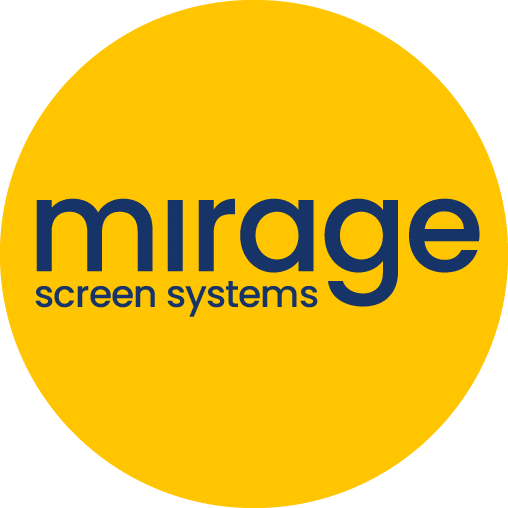Many business owners feel that they must choose between PPC and SEO when it comes to designing their marketing strategy. However, when thoughtfully combined, these complementary tactics create a comprehensive search presence that drives both short-term and long-term growth.
But how do SEO and PPC work together to maximize your visibility and boost conversions? That’s exactly what we’ll explore in this blog post, along with their key differences, the benefits of combining PPC and SEO, and actionable steps to integrate both into your marketing strategy.
What is SEO?
SEO (search engine optimization) allows websites to appear higher on search results pages when people look for information online. Optimizing your website attracts more visitors, increasing leads over time without the need to pay for each click.
Search engines use complex algorithms that consider content quality, website design, and user experience for ranking websites. The three main components of SEO are:
- On-page SEO: Involves optimizing individual pages with targeted keywords in titles, headings, and throughout your copy to help search engines understand what your page is all about.
- Off-page SEO: Builds your site’s credibility by using backlinks from reputable websites, which are like votes of confidence for your content.
- Technical SEO: Ensures search engines can access, crawl, and index your website efficiently by improving security, mobile-friendliness, and loading speeds.
What is PPC?
Pay-per-click (PPC) advertising involves ads that you only pay for when a user clicks on your ad. With this approach, your company reaches prospects the minute they search for your kind of services or products. Your ads appear with a “sponsored” label, typically at the top of search results, where they draw people’s attention immediately.
The main types of PPC advertising include:
- Search ads: Text advertisements that appear alongside relevant search terms. They blend with organic results but include an “Ad” label to identify them as paid content.
- Display ads: Visual ads shown across Google’s partner sites, combining images and text. The ads target specific audiences based on user interests or browsing habits.
- Video ads: Displayed on YouTube and other streaming platforms, reaching internet users through engaging visual content that showcases your offerings effectively.
- Shopping ads: Product listings shown in a carousel format with images, prices, and store information. This creates a “window-shopping” experience where customers can compare products from different retailers before purchasing.
SEO Vs PPC: What’s The Difference?
Digital marketers debate which approach yields better results: SEO or PPC. Both methods drive traffic to websites but have different implementation methods, timelines, and long-term value. Here’s how they differ in key areas:
Visibility
When it comes to search visibility, SEO boosts your site’s ranking in organic search results without requiring you to pay for each visitor. Your content will be ranked based on merit and relevance, building a long-term digital presence for your business over time as search engines recognize the value of your site.
On the other hand, PPC positions your ads on top of search results the moment you start your campaign. However, this visibility vanishes when you stop funding the campaign. You may also have to keep updating your ads because people develop “ad blindness” after a while. Your visibility directly depends on your bidding strategy and how much you are willing to spend.
Cost
SEO requires an initial investment in content and technical improvements, but is more cost-effective long-term. Once your pages are well ranked, they continue to generate traffic without the per-click costs, building value that pays out exponentially.
Meanwhile, PPC requires constant funding, with each click incurring an expense. Visibility disappears if you do not have the resources to spend on PPC, although targeted local or niche campaigns can generate quality leads at affordable prices.
Results Timeline
SEO takes patience, typically taking 4-12 months of continuous effort before it begins bearing fruit. It’s a slow process that involves building site authority through quality content, technical SEO, and obtaining links from other websites.
Comparatively, PPC delivers traffic almost instantly, making it perfect for new websites, product launches, or limited-time promotions. Visitors arrive hours after the campaign launches, providing immediate performance data that allows for quick adjustments to the strategy.
Control
SEO gives you control over your website organization and content quality, but its success is determined by search engine algorithms. Rankings can change based on competitor activities and algorithm updates, so the exact position of your site is difficult to guarantee. You influence rather than control organic rankings through SEO best practices.
PPC, however, offers precise control over your target audiences, budget allocation, ad scheduling, and landing page selection. You can quickly adjust bids, pause underperforming ads, and test different messages based on demographics and real-time performance metrics.
ROI
In the long run, SEO delivers better returns as rankings improve and traffic increases without a proportionally higher cost. The combined power of quality content and site authority continues to generate value long after content creation.
By contrast, PPC provides immediate return metrics through detailed analytics. You can see how many clicks and conversions your ads generate, making it easy to calculate value, adjust strategies, and optimize performance.
Required Knowledge
SEO requires an understanding of technical website features, content strategy, keyword research, and link-building tactics. Success depends on your knowledge of search engine preferences, user intent, and technical factors like site speed and mobile responsiveness. The constantly changing nature of SEO demands ongoing learning.
To run PPC campaigns effectively, you need expertise in campaign structure, bidding strategy, compelling ad writing, and audience targeting. Successful campaign management includes knowledge of quality scores, conversion tracking, and landing page optimization.
Conversion Rates
Across most industries, SEO achieves higher conversion rates. Organic search visitors often convert better because they find your content based on relevant searches. Users have more faith in organic listings, as they consider them to be more authentic and relevant, based on their queries.
On the PPC side, conversion rates vary based on targeting accuracy, ad relevance, and landing page quality. While generally lower than SEO conversion rates, PPC can provide precise targeting that can maximize conversion potential when properly optimized.
Sustainability
SEO provides a long-term foundation for web presence that continues to perform without requiring you to pay for each visitor. The content and credibility developed through SEO give a solid edge that grows more valuable in the future as your site becomes more powerful.
Unlike SEO, PPC lacks sustainability since traffic stops immediately when campaigns end. While effective for short-term goals, it requires continuous funding to maintain results. However, PPC data provides valuable insights that can inform more sustainable marketing efforts.
Benefits of Leveraging SEO and PPC Together For Your Local Home Services Business
When you integrate SEO and PPC, your local home services business will benefit more than it would from using either strategy on its own. Here’s why PPC and SEO working together is a winning combination for your local home services business:
Improved Keyword Research
SEO and PPC both provide complementary data about which keywords produce actual business results. Your PPC efforts give you instant performance metrics that can influence your organic content strategy. With this two-way flow of information, you can discover high-value keywords that you might miss otherwise.
Enhanced SERP Domination
Having your business appear in both paid and organic listings leaves a stronger impression on potential customers. This dual presence increases trust and brand recognition, ultimately helping you dominate SERPs. Users who see your business multiple times on the same page will be more inclined to choose you over a competitor who appears once.
Better Understanding of User Intent
PPC campaigns instantly reveal which messages resonate best with searchers. This information helps you create more targeted content, allowing you to align your ads and site content more closely with what customers want.
Faster Results
PPC delivers immediate visibility, while SEO builds value over time. This balanced approach provides quick wins through ads while your organic rankings develop. Together, they ensure continuous visibility and improved results throughout your marketing journey.
Informative Landing Page Optimization
Combined data from both PPC campaigns and SEO metrics gives you a complete picture of your visitor activity. By studying engagement patterns, you can determine which content elements drive conversions, making targeted changes that are good for your SEO rankings and PPC quality scores.
Cost-Effective Marketing
As organic rankings improve, you can shift ad budgets toward better opportunities. SEO delivers sustainable traffic without incremental costs, and PPC provides precise targeting and immediate visibility when and where you require it the most.
Improve Remarketing Efforts
SEO brings more traffic to your site, giving your remarketing campaigns a larger audience pool. Your PPC tools can deliver targeted ads to previous visitors based on their specific interests, which keeps your business in front of leads throughout their decision-making process and increases return conversion rates.
Data Synergy and Insights
Running both channels provides twice the marketing insight into your local marketplace. Patterns found in one approach often indicate related opportunities in the other, helping you identify profitable trends that might go unnoticed when using either approach independently.
Improved Click-Through Rates
Multiple listings naturally increase the chances that users will visit your website. This reinforcement helps your business appear more established and credible in your local market, while higher click-through rates positively impact your search rankings.
How to Integrate SEO and PPC
Here are seven practical ways to bring your SEO and PPC strategies together for maximum marketing impact:
Shared Keyword Research
Your SEO and PPC teams must employ the same set of keywords to construct a combined strategy. Tools like SEMrush and Google Keyword Planner help identify which keywords work better for advertising or organic listings.
Inform SEO Content with PPC Insights
Paid ads quickly show which content drives clicks. See what PPC headlines and descriptions have the highest click-through rates and replicate the same wording in your SEO page titles and meta descriptions. The search terms people actually use often reveal content topics your website should cover. When visitors click but don’t convert, your PPC data can highlight questions your content needs to answer better, focusing your content generation on proven topics rather than guesses.
Retargeting with PPC
Users who land on your website via organic search but leave without converting are the perfect audience for retargeting ads. Add tracking pixels to your highest-performing organic landing pages to create custom audience lists. Your retargeting ads can mention the very products or topics of interest visitors viewed to make them more personalized. Prioritize your bidding based on visitor behavior, investing more to reach those who showed higher purchase intent by visiting price pages or product details.
Use PPC for Keyword Testing
Running small PPC campaigns lets you test potential SEO keywords before spending weeks building and perfecting content. Monitor not just clicks but engagement metrics like bounce rates, CTRs, and dwell time to evaluate traffic quality. This testing reveals which topics your audience genuinely cares about versus which keyword tools suggest might be popular.
Optimize Landing Pages
Develop pages that deliver well for both paid and organic traffic by combining conversion features with SEO best practices. Test different headlines, images, and call-to-action buttons through your PPC campaigns before including them in optimized pages. Also, include proper schema markup, descriptive headers, and in-depth content that both search engines and real visitors appreciate. Maintain consistency between ads or search listings and landing pages to avoid misleading visitors.
Align Messaging
Your brand should remain consistent whether someone finds you through an ad or organic search. Compare your ad copy and website content to see if there are any contradictions in how you describe your products or services. Set clear guidelines for your marketing teams that outline your key selling points and preferred terminology. A/B testing different messages in your PPC ads reveals which benefits resonate most with customers before you commit to highlighting them in content across your website.
Target and Analyze Performance
Create reports showing how SEO and PPC complement one another rather than viewing them as entirely separate channels. You can track how visitors shift from organic to paid touchpoints before converting, as many customers interact with both. Look for opportunities to reallocate your resources based on which channel delivers leads more cost-effectively while maintaining overall conversion volume. You can respond quickly if you set up alerts when performance shifts significantly in either channel.
Need Help With SEO and PPC Campaigns?
Combining SEO and PPC strategies helps your business stand out among billions of competing sites. Outpace offers tailored SEO services that place your business on Google’s first page, while our data-driven PPC approach converts ad spend into revenue.
Our experts constantly adapt to Google’s algorithm changes, ensuring that your website receives more visitors and converts them into paying customers. Contact Outpace today to stop losing business to your competitors and start seeing real results.
Frequently Asked Questions (FAQs)
Yes, strong organic content often leads to better ad quality scores, while PPC campaigns provide quick keyword insights for SEO. What you learn from each strategy strengthens the other when used together.
For local home services businesses, the best approach combines both rather than choosing one over the other. SEO builds long-term visibility, while PPC delivers immediate traffic. Your business goals, timeframe, and budget should determine how you balance these two marketing tools.
You can track SEO success by measuring key metrics like organic traffic growth, keyword rankings, and user engagement through tools like Google Analytics. For PPC, focus shifts to click-through, conversions, and cost-per-customer metrics. Regular reviews help you determine which marketing efforts deserve more investment and which need adjustment for better results.






















